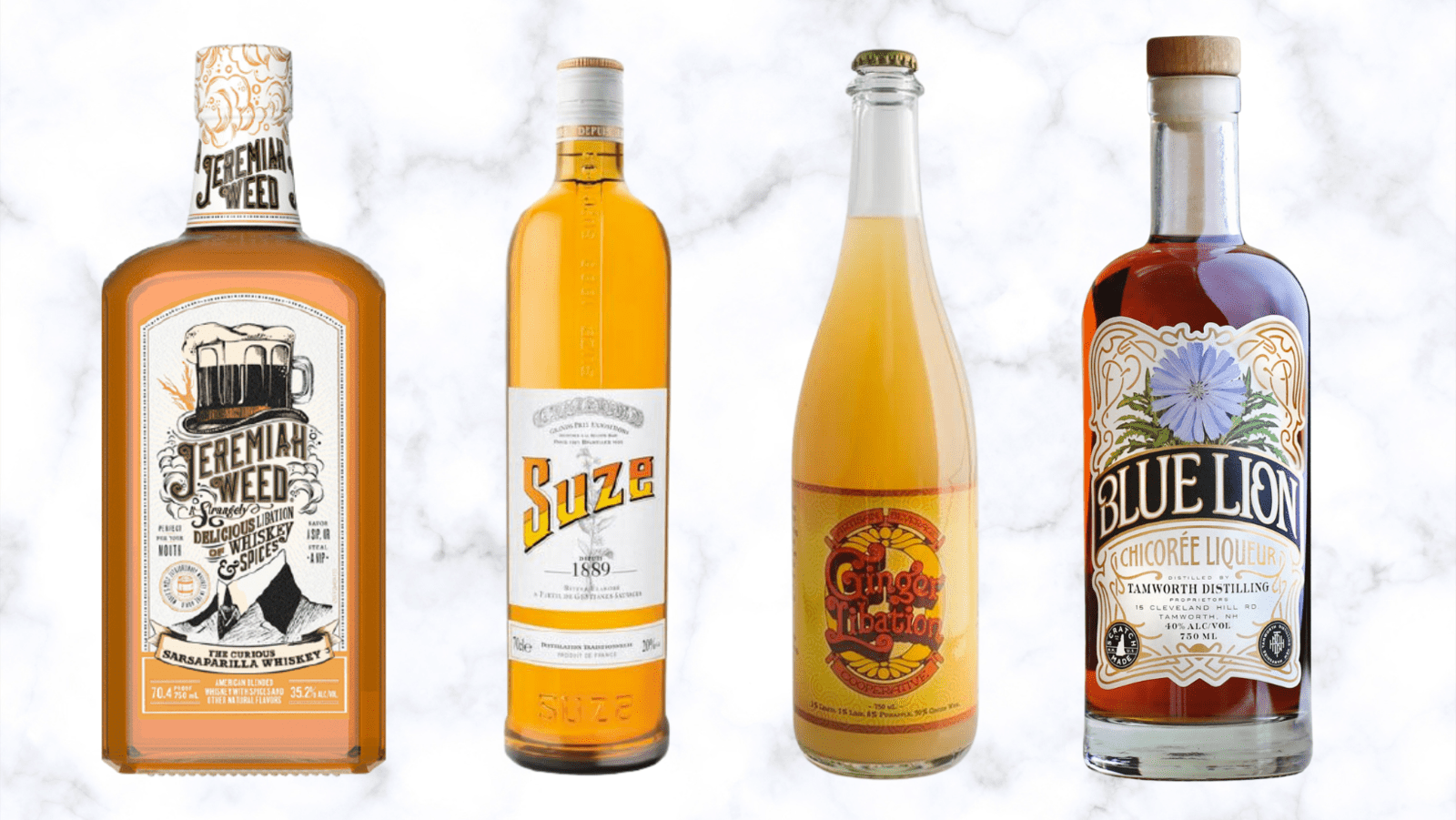
For as long as humans have been tugging roots out of the ground they’ve been making drinks with them. Roots are a plant’s main water-and nutrient-collecting system and often possess far more concentrated flavors and health benefits than the rest of the plant. This potency has made them invaluable elements of folk medicine for thousands of years. Even if roots’ curative capabilities were dubious, their bold, sometimes overpowering taste was sure to leave an impression. Steeped, ground, stewed, or pickled for your health: there are few ailments humans haven’t tried to treat with tubers.
There’s even evidence to suggest that roots’ resemblance to the human body inspired their use in medicine—take the fabled mandrake, for instance. The roots of this flowering nightshade, with their thick central trunks and branching limbs, look eerily like tiny humans and were frequently used in ceremonial magic and earth-based religions (they were even said to scream when pulled from the ground—cue the Harry Potter theme). In fact, legend held that mandrake root was the primary ingredient in the brew that enabled witches to fly, along with deadly nightshade, henbane, and devil’s snare. We shudder to imagine that morning after.
For those not inclined to dabble in the occult, there are plenty of tasty, non-magical potions rooted in rhizomes. Just ask the lads at Tamworth Distilling: they’ve never met a tuber they couldn’t turn into a tipple. The scratch distillery nestled at the base of New Hampshire’s White Mountains sources all its ingredients from within a 150-mile radius and has made waves in the craft spirits scene for their bold experimentation. Distillers Jamie Oakes and Matt Powers are no strangers to mucking about in the dirt for new things to stew, resulting in a series of spirits flavored with sweet potato, beet, ginger, chicory, dandelion root, and turmeric, to name a few. The team is heavily inspired by the writings of nineteenth-century Prussian naturalist Alexander von Humboldt, who poked around the far corners of the earth gathering ecological knowledge that continues to help us decode the natural world today.
Humboldt no doubt sipped on his fair share of root-based teas and tonics in his travels, whether to ease into sleep, fend off sickness, or fortify himself for another jungle trek. But no need to don your mosquito net hat to explore the world of drinkable root infusions. We’ve unearthed some sweet, spicy, and bitter brews to enjoy with that other beloved pick-me-up: cheese.
SUZE
+ BERGBLUME
Mention gentian root to most people, and you’re likely to get a blank stare. But scan the forgotten (read: dusty) shelves of your local liquor store and you’ll be in friendlier territory. The roots of the flowering Gentiana family are used to flavor many a beverage, mostly of the alcoholic variety (one notable exception is Maine’s revered/reviled Moxie soda), lending them a singular bracing, medicinal taste. The majority of these liqueurs hail from regions in and around the French, Swiss, and Italian Alps, and are sometimes hard to track down in the US—but if you’ve ever tasted Angostura or Peychaud’s bitters, you’ve tasted gentian root. If you can get your hands on a bottle of Suze or Bonal (again: check the bottom shelves at the liquor store), enjoy with soda over ice alongside a sliver of creamy, Alpine-style Bergblume.
JEREMIAH WEED SARSAPARILLA WHISKEY
+ THYBO
It’s hard to describe the taste of sassafras without comparing it to root beer—it is, after all, the titular root in root beer. Long before there was root beer, however, indigenous peoples of North America used all parts of the Sassafras albidum plant in medicine, cooking, and handicrafts. The roots lent a sweet, perfume-y note to early soft drinks like sarsaparilla, and were even added to “calming” opium tonics (!) to make them more palatable to nineteenth-century children—problematic for many reasons, not least of all because safrole, the oil derived from the sassafras root, can be toxic to humans (the FDA banned its use as a flavoring in 1960). Nowadays, the sassafras flavoring you’ll encounter in the wild is most likely synthetic, but still brings to mind those old-timey soda fountains and candy counters. A shot of Jeremiah Weed’s Sarsaparilla Whiskey (or Hosmer Mountain Sarsaparilla soda) will surely cure what ails you; chase it with a spikey, savory chunk of blue-tinged Thybo Danish Gouda.
TAMWORTH DISTILLING BLUELION CHICORÉE LIQUEUR
+ QUEIJO DE NISA
We’ve established that roots can be a bit divisive (in more than just sidewalks). But cheese made with cardoon thistle rennet inspires just as much—if not more—consternation among turophiles. This vegetarian coagulation technique can imbue cheese with tingly, tangy overtones; thrilling for some, startling for others. In this pairing, the dark smoothness of Blue Lion chicory liqueur goes head-to-head with the almost-sour sheep’s milk Queijo de Nisa, creating a tempest of flavor. Those looking for a non-alcoholic alternative will find it in New Orleans’ own Café du Monde Coffee + Chicory (decaf available).
GINGER LIBATION
+ BEEHIVE CHEESE TEAHIVE
We couldn’t bring up roots and not cover ginger! The poster child for medicinal rhizomes is perhaps the most approachable root for flavoring dishes and beverages. Its spicy-sweet personality and unmistakable fragrance features in teas, sauces, dressings, baked goods, candies, and sodas; it’s also widely used as a homeopathic treatment for nausea and indigestion. Ginger Libation is a Jamaican-style, alcoholic ginger beer that works well as an aperitif or digestif, and brings out the smokey, floral notes in Beehive’s Earl Grey-rubbed Teahive cheddar. For a bonus suggestion, we’d also recommend a snifter of Tamworth Distilling’s earthy Von Humboldt Turmeric Cordial (turmeric is a member of the ginger family); either way, you’ll set yourself up for a pairing that tastes like a healthful tea party.



